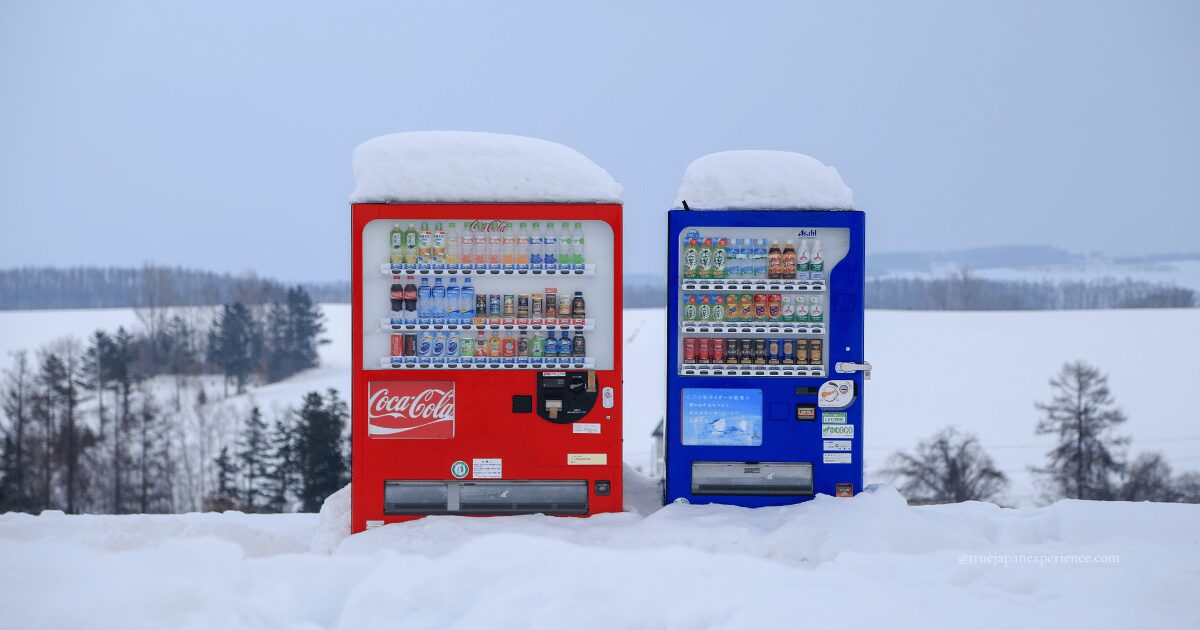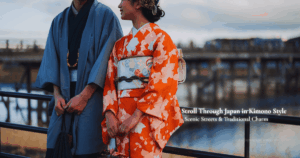Japanese vending machines are a big part of daily life in Japan.
But for travelers, they are also a fun and surprising way to experience Japanese culture.
You’ll see them almost everywhere—at train stations, on quiet streets, and even in the mountains.
They are open 24 hours a day, and very easy to use. Many visitors are amazed by how helpful and safe they are.
A Short History of Japanese Vending Machines

Japan’s first vending machine was made in 1888. It sold cigarettes and was made of wood.
Later, in 1904, a machine that sold stamps and postcards was used in post offices. This is the oldest vending machine that still exists today.
In the 1920s and 1930s, new machines appeared. One sold snacks in bags. Another sold caramel candy and even played music and videos. Children loved it.
After World War II, vending machines became popular very quickly.
In the 1950s and 60s, American drink companies like Coca-Cola brought bottle and cup machines to Japan.
By 1970, there were 1 million machines. In the 1980s, the number grew to 5 million. Japan became the world’s top vending machine country.
One big invention was the machine that could sell both hot and cold drinks in one. This was perfect for Japan’s four seasons.
Why Are There So Many Vending Machines in Japan?

When walking through Japan, many visitors are surprised by how often they see vending machines—even in quiet places.
There are a few reasons.
First, Japan is very safe. People do not break vending machines or steal from them. That’s why you can see them even on quiet streets.
Also, Japanese workers are very busy. Many don’t have time to go to a store or wait in line. Vending machines are fast and easy to use.
Another reason is the good support system. Special companies take care of the machines.
They refill the drinks, clean the machines, and take away the trash. Many machines have recycle bins next to them to keep the area clean.
What You Can Find in Japanese Vending Machines

Japanese vending machines are famous for offering much more than just regular drinks. Many travelers are surprised—and even delighted—by the unusual things they find inside.
Of course, you can buy drinks like tea, coffee, juice, and soda. But there are also many surprising things.
You may find:
・Hot soup in a can, like oden
・Ramen or curry rice
・Ice cream
・Local foods such as crab from Hokkaido or takoyaki from Osaka
・Everyday items like T-shirts, batteries, anime toys, and contact lenses
Some machines serve hot meals like ramen and curry rice, ready to eat right away. Canned oden also comes out warm, making it a great choice during colder seasons.
You may find vending machines that sell regional specialties, like seafood or local snacks, usually placed in the area where they’re made.
There are also some machines that sell non-food items, such as T-shirts or small toys.
Exploring different vending machines during your trip can turn into a small adventure. Each one offers a little surprise—and a unique taste of Japanese culture.
How to Use a Vending Machine in Japan

Using a vending machine in Japan is simple.
First, put in money—coins like 100 or 500 yen, or a 1000 yen bill.
Most machines do not take 5000 or 10000 yen bills.

Some machines also accept IC cards like Suica or Pasmo. If you use a card, tap it on the reader before choosing your drink.
Next, press the button for the item you want. Some machines use a touchscreen.

Your item will come out at the bottom. Don’t forget to take it!
If you paid too much, your change will come out in a small slot. Please remember to take it, too.

Be careful when choosing drinks—some are hot, and some are cold.
In summer, most machines offer only cold drinks. But during the colder months, many vending machines sell both hot and cold drinks side by side.
Red labels usually mean hot, and blue labels mean cold, so it’s a good idea to check before you buy.
Why They Feel So Special to Visitors

Japanese vending machines are not just useful—they’re fun to look at and fun to use.
Many machines have colorful designs or local illustrations, which catch people’s eyes. Some feature popular characters or unique artwork that matches the region.
That’s why many travelers stop to take photos and share them on social media. It’s not just about what you buy, but about the whole experience.
Ice cream vending machines, for example, are rare in many countries, but very common in Japan.
Machines like the “Seventeen Ice” series by Glico offer different flavors and show product details in many languages. This makes it easier and more fun for tourists to try something new.
In addition, the way you pay is part of the charm.
Instead of using credit cards, you usually pay with coins, bills, or an IC card like Suica or Pasmo. It’s simple and fast, and many visitors find it refreshing compared to the systems in their home country.
For many travelers, just buying a drink or snack from a Japanese vending machine becomes a small memory of their trip.
The machines are part of everyday life here, but for visitors, they offer a new way to enjoy Japanese culture—quick, colorful, and full of little surprises.
Want to explore more about Japanese travel and culture?
Visit our home page to find more helpful tips and unique experiences.









